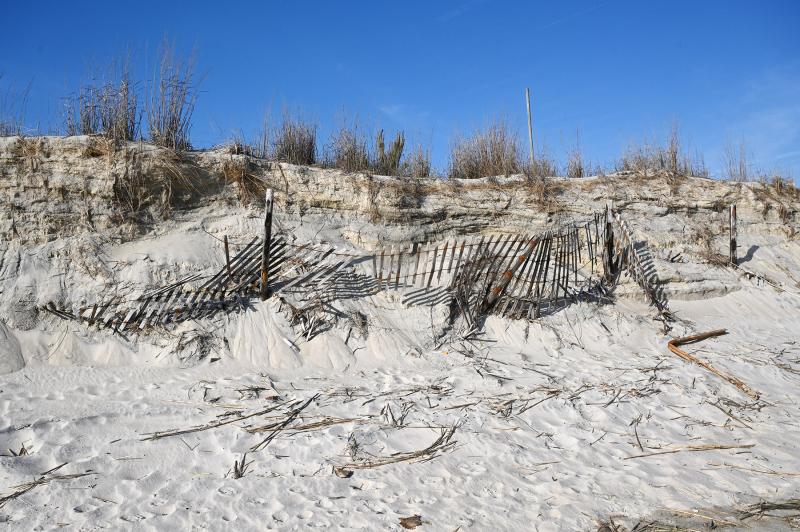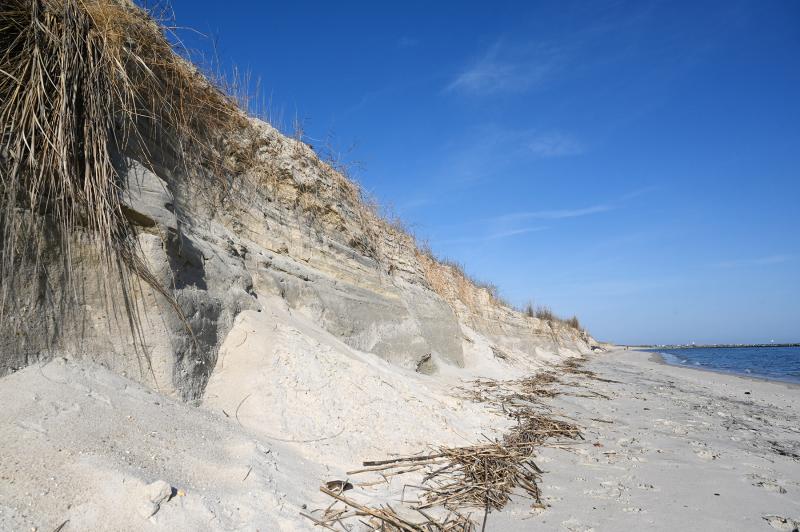Many beachgoers enjoying the warmer-than-normal weather last week were greeted by difficult-to-navigate dune crossings on Lewes Beach.
Several entrances near Roosevelt Inlet had not yet been repaired following a fall storm that eroded the dune and left bluffs taller than 10 feet in some areas.
As of April 18, most of the Lewes Beach dune crossings had been repaired, said Delaware Department of Natural Resources and Environmental Control Shoreline and Waterway Management Section Administrator Jesse Hayden.
“Our beach crew, which has been significantly shorthanded lately due to vacancies, is currently working on preparing dune crossovers across all of our beach communities in preparation for the coming summer season,” Hayden said. “This work usually spans most of April and May, and then continues through the summer as pedestrians, vehicles and nature all act on the sand.”
Lewes City Manager Ann Marie Townshend said the city aided DNREC by collecting sand that had accumulated in the beach parking lots and trucking it to Roosevelt Inlet for use in the repairs. Hayden said crews were on site April 17-18 repairing crossovers that were in the worst condition. Despite that, the crossover at Nebraska Avenue, one block east of the Lewes Yacht Club, had not been fixed as of April 20.
In a statement one day earlier, April 19, Hayden said crews had moved on to South Bethany after working in Lewes.
“DNREC will continue to work in partnership with coastal communities to maintain safe crossovers for all beach users throughout the summer,” Hayden said.
As for the dune, which looks like a cliff of sand with fencing dangling in places, Hayden said nothing will be done at this time.
“The dune condition in Lewes is an acceptable natural state that is not in need of widespread intervention – even though it may appear visually striking to see steep slopes where we formerly saw gradual slopes,” he said. “DNREC and the Shoreline and Waterway Management Section will focus on pedestrian and vehicle crossovers to improve their condition in light of the steep dune slopes that we currently observe.”




















































